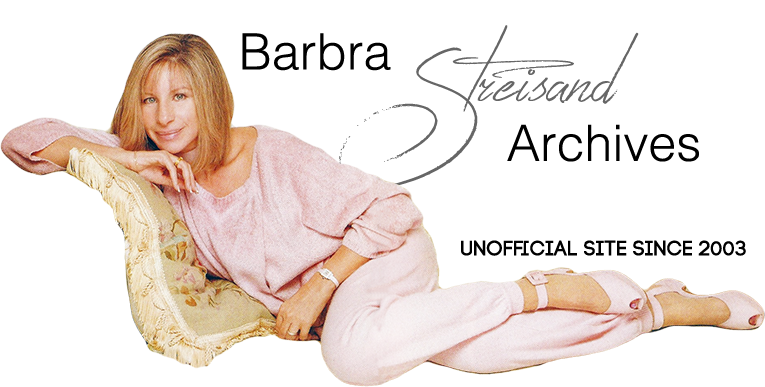James Spada

November 2003 / May 2014
Interview by Matt Howe / Barbra Archives
James Spada is a familiar name to Streisand fans. He has written three books about Barbra Streisand: “Barbra: The First Decade,” published in 1974; “Streisand: The Woman and the Legend,” published in 1981; and “Streisand: Her Life,” published in 1995.
Spada was also one of the instrumental people involved in Barbra Quarterly, a Streisand fan magazine published in the mid-80s. The magazine featured rare photos and excellent stories about all facets of Barbra's career. Spada took over as Publisher and Editor-in-Chief on the fifth issue, which featured a color photo by Steve Shapiro. The magazine was a pre-internet way for fans to keep informed about Barbra's career. It had regular features like "Letters That Cross in the Mail" (reader correspondence), "Extra, Extra" (latest Streisand news), and "Don't Believe What You Read" (nonsense on Streisand). [All issues of the magazine are documented at the bottom of this page.]
James Spada also wrote Monroe: Her Life in Pictures, The Films of Robert Redford, Judy and Liza and the upcoming Julia Roberts biography to be published in 2004.
Jim talked to “The Barbra Archives” about his Streisand books and Barbra Quarterly in November 2003.
Matt Howe: I’ve read your books for years. I have all of them. Do you consider yourself a fan, or are you just a biographer?
James Spada: No, I’m a fan. That’s why I wrote the first book, basically. And I continued to be a fan. It always seemed logical to keep up with her career by writing the latest installment.
MH: The First Decade is like a Barbra encyclopedia.
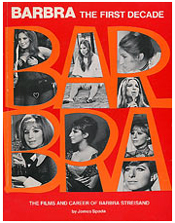
JS: Yes, I was a Marilyn Monroe fan club president as a teenager and I remember seeing a book on her in the Citadel press “Films of…” series. It was actually much simpler than they are now, because it was one of the first in the series. They’ve gotten much more detailed now, with color and long biographical sketches, things that this book didn’t really have. But I loved it as a young fan of Marilyn Monroe, so when I became a fan of Barbra Streisand I thought, wouldn’t it be great to have a book like this on Barbra? Of course it never occurred to me that she was only 32 years old and really just starting her career. The publisher mentioned that to me and I said, “She’s done Broadway, she’s done television, she’s done recordings, and she’s done movies so I think there really is enough here for a book.” They finally agreed. It was great fun to do. It was my first book ever.
MH: I pulled out all my Barbra Quarterly magazines. I think I have the complete set – there are 12 issues, right?
JS: Ten.
MH: You contributed to the first four issues, but you weren’t the publisher at that point right?
JS: The first one I published was the one with the color cover, which I think was number five.
MH: How did you get involved in becoming the publisher and main editor of the Barbra Quarterly magazine?
JS: Well, Chris Nickens and Bob Scott, who founded it, were longtime friends of mine. Chris had helped me from California on the first book, while I was still living in New York. He supplied a lot of the pictures because he had a collection, which I didn’t. Then when I moved to California I befriended Chris. Bob I knew in New York from the first book and he moved out to California. I don’t really remember how [getting involved with the magazine] came to pass. I think Bob was struggling, as I ultimately did, with keeping it going. I had some money to put into it and I thought it might be interesting to make it higher quality with color and glossy paper and all the other changes we made. It just happened. I honestly don’t remember how. That was a lot of fun, too.
MH: Those were the early days before the internet. The Barbra Quarterly was the only way to get that kind of career information about Streisand.
JS: It’s true. I think we provided a service to Barbra’s fans. I’ll never forget that we got letters after my first issue went out saying, “Oh my God, I nearly fainted when I saw the color cover!” We didn’t warn anybody that the color cover was coming and it was such a change. It was fun for me because I got to go to the printing plant and see all the presses. I’m fascinated by all that stuff anyway. It was partly an education for me: color separation, the old way they used to do it, the old fashioned way. We put together this core group of Streisand fans who wanted to participate in the magazine. I called people I knew. If I didn’t already know them they came as volunteers, because they were Barbra fans and wanted to be involved. We met some extraordinary people, extraordinarily talented people. Good writers who were willing to work for practically nothing, which is all we could pay them! So that was very stimulating, too, and many of these people are still friends of mine.
MH: The names that most people are familiar with are Karen Swenson and Chris Nickens and Michel Parenteau …
JS: … yes, Michel’s now deceased. And Guy Vespoint, who came to visit me in Massachusetts last year. And Vernon Patterson, a very good writer. We had one volunteer, Cynthia, who was unbelievable. She was so good at what she did. She was a great typist and incredibly efficient. She wanted to work because she loved Barbra. That was the key to the whole thing – it was all fueled by an admiration for Barbra Streisand.
MH: It’s such an amazing magazine. So much of the core information about Barbra is covered in them: the TV specials, the early days, interviews with Roslyn Kind and Rupert Holmes. The magazines are a great time capsule of that period of Streisand fandom.
JS: Yes, that’s an interesting way to look at it.
MH: Karen Swenson went on to become Streisand’s archivist, right?
JS: Yes, Barbra was impressed by her research abilities and attention to detail, which we all were.
MH: What’s your favorite part of Streisand’s long career?
JS: Oh God, it’s difficult to choose. You’ve got 1968, 1976, 1983. I think all those years were pretty unforgettable if you’re a Streisand fan. 1964, if you go back that far. I wasn’t a fan at that point, I became one in 1965, but I did see Funny Girl on Broadway.
MH: You did? Wow.
JS: People shake their heads when I tell them this, but at the time I was not a fan. I was only 14 years old. A friend of mine in Manhattan sort of dragged me kicking and screaming to see it. We had to stand in the back, which I didn’t like. Not only was I not primed for the experience, but I was way in the back. I also don’t think it was one of Barbra’s better performances because I remember not being very impressed (LAUGHS).
MH: That’s funny. Was it miked? They used microphones on that show, right?
JS: I think so, but I couldn’t say for sure. The only thing I vividly remember is her standing on the staircase and singing “People.” Which is interesting because I would think a number like “Cornet Man” would stick in my mind more, but that’s what I mostly remember. Of course, now I’m really sorry that I wasn’t a big fan at the time. I was a bigger fan of Hello Dolly!
MH: Dolly was playing at the same time on Broadway, right?
JS: Yes, Barbra lost the Tony to Carol Channing.
MH: So you became a fan in 1965 – was that because of My Name is Barbra on TV?
JS: Yes. By the time Color Me Barbra came out I was going over to my aunt’s house to see it in color because she had a color set and we didn’t. So I was definitely a fan at that point! (LAUGHS).
MH: I’m interested in knowing why you wrote Her Life, which is your most recent Streisand biography, when you’d already written two books about her?
JS: Well, I wondered that myself. It was my publisher’s idea, actually. To make a long story short, I had a contract for a different subject, and problems developed with that. My editor came back to me and said, why don’t you do another book on Streisand? And initially I was reluctant for the very reason you brought up. Do I really want to have three Streisand books on my resume? And what can I bring to this that will be new? What’s the reason to do it?
And I realized there were two main reasons to do it. One was that I’d never written an in-depth biography of Barbra before. The first one, as you say, was more of a career encyclopedia. The second one had a biographical text, but it really wasn’t a biography. And the other reason is that ten years had passed since my last book.
MH: She kept working!
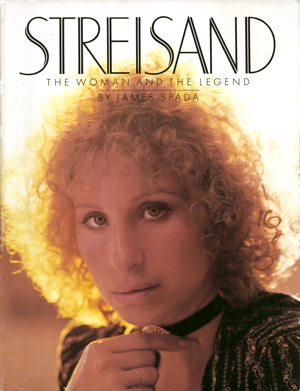
JS: It was fourteen years by the time the book was published. There was enough new material to cover with a new slant and more information. I’m very proud of the third book and I think it’s certainly the best in terms of the biographical information that it contains.
MH: I think it’s the best of all of the biographies out there. It’s the most complete. I’d forgotten that you’d done a genealogy on Streisand – you’d researched her ancestors, right?
JS: Yes, absolutely, back to her grandfather in Galicia. No one’s ever done that with her.
MH: I wonder if that’s news to Barbra?
JS: I think it probably was. Some of it. Certainly the history of Galicia, the persecution of the Jews there. I did all that research into that period and that whole area that didn’t have anything to do specifically with her grandparents, but they lived in the area at the time, so it had to have affected them.
I did interview Barbra’s aunt. She told me that that was where they were from, so that’s how I knew to look there, but she didn’t remember her father ever talking about the experience. I basically had to recreate that based on historical research.
MH: How much fun could that be, writing a book like that? I was reading the Source Notes. You did a lot of interviews. Did you sit down face-to-face with people, or do telephone interviews?
JS: It was about half and half, I’d say. The phone interviews come in handy when someone’s on the other coast and you can’t make a trip. But it’s more satisfying to sit down with people. It’s kind of a double-edged sword. A lot of times I find that when people are on the phone they’re less reticent to talk. Whereas if you’re in person they might be more reticent to talk but you might be there longer (LAUGHS). So maybe it comes out even in the end.
MH: Who were you most excited to interview?
JS: The Bergmans were great. I went to their house to do the interview. It was a real pleasure to meet them because I’ve admired them for so long. And they’re so close to Barbra. I interviewed them for the Billboard special issue that I edited (in 1983). So that was fun. And talking to Barry Gibb on the phone was a treat. I went to Vincente Minnelli’s house and spoke to him. He was so elegant, you know, silver service tea and all that. It was totally what you’d expect from him. I interviewed Robert Redford, but not for this book.
MH: You wrote an entire book on Redford?
JS: Yes, and that was a highlight of my career I think. He authorized that book—Redford’s the only subject I’ve ever written about whom I’ve actually interviewed. At the time he was a huge star, so that was very exciting. Barbra cooperated with “The Woman and the Legend.” I got to talk to many of her co-workers for it. But I didn’t get to interview her.
MH: So Barbra cooperated with the writing of the second book?
JS: She did, to a point. She’s never given any kind of cooperation to any other author writing about her. The reason she did was that she liked the first book (“The First Decade”). And then when I did the second one she agreed to give me access to her coworkers – as long as it was about her career, not her personal life – and she approved the cover. I actually sent her the Up the Sandbox chapter, which she looked over. She was fine with it and had a few changes she wanted made, but nothing major. She never asked for manuscript approval in return, which I thought was great.
With “Her Life,” she went back and forth on whether or not to cooperate, which is something Barbra does that drives me crazy. It dragged on for months and finally I decided I had to go ahead. Then two months later Marty Erlichman called me and said Barbra’s reconsidering. But it still didn’t happen.
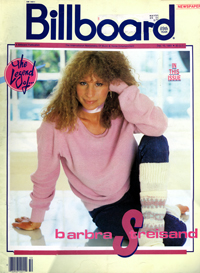
MH: So, as a writer, you have to make a decision: how far do you go with her cooperation, or when do you proceed without it?
JS: Well, sure. I usually don’t start a project until I know if the subject is going to cooperate because it affects how you write to people about interviews, how you approach them. So I decided I had to proceed because I had a deadline on “Her Life.” I couldn’t wait for her decision. It would be great to interview Barbra because she has complained of inaccuracies in books about her. I’m sure there are several in mine. I don’t know how you avoid them without speaking to the subject. She complains about inaccuracies, but she’s never given any biographer an interview, not even me—and I, as you say, have gotten the closest of anyone. It would be great to bounce things off her that people have said. I did that with Redford and it was fascinating because he usually had a completely different take on a situation than the person who first told me about it. I didn’t know what the truth was, so I presented both versions, indicating the very contradictory feelings these two people had about working together.
That’s very interesting from a biographical standpoint and from a fan standpoint. So that would be nice to do with Barbra.
And she has said that she may write a book of her own some day. The problem is that she’s going to need someone like me or Karen Swenson to read the manuscript and make sure she’s correct about the facts. Her inscription to me on the first book was: “Your book is a big help to me since I can never remember any of the dates in my career. All I have to do is refer to your book.” (LAUGHS). I think that was very sweet, and it’s true. When she was doing her concert she had that picture she flashed on the screen of meeting Prince Charles. She said it was when she was making What’s Up Doc. That’s not true!
MH: It was Funny Lady ... Which I think she’s completely blocked out of her life.
JS: (LAUGHS) As her fans have tried to do. Facts aside, it would be great to get her own personal take on all of the things she's done in the entertainment field. I wish she would write an autobiography.
MH: In the online discussion groups, if Barbra says something incorrect about her own career, the fans notice. It’s funny. I’m sure Barbra has better things to do than keep all of her career milestones straight, but sometimes the fans know better than she does. JS: I remember once being interviewed on Canadian television about my career. The interviewer mentioned a book I’d written that I didn’t even remember I wrote! (LAUGHS). It does happen! I guess it’s the same thing with Barbra, or anyone with a long career. Her fans consider everything a huge, huge thing. But to her it’s just one movie, one record, one show over many, many years.
MH: Have you ever met Barbra?
JS: I have. During the filming of A Star is Born they had that big press conference in Tempe, Arizona. They had a series of tables set up where a group of journalists would talk to her and Kris [Kristofferson]. So I finagled a seat right next to Barbra. I introduced myself and told her I had written “The First Decade” and she said, “Oh, I liked that book. But, you know, the publisher wouldn’t send me any free copies.” (LAUGHS). And I said, “Well, Barbra if it was up to me I would have sent them.” What she failed to mention is that she didn’t want a few free copies, she wanted one hundred free copies.
MH: Oh, God (LAUGHS).
JS: And that’s what they refused to send her. (LAUGHS). With all her money she wants a hundred free copies of my book. That’s so typical of Barbra.
And then I’ve met her briefly at fund-raisers and things like that. Sometimes she remembers me and sometimes she doesn’t.
MH: Have you seen her perform live, besides Funny Girl?
JS: Yes. I saw her in Arizona as she filmed the concert footage that was in A Star is Born. I saw her live at an AIDS Project Los Angeles fund-raiser.
MH: When she sang the duet with Johnny Mathis?
JS: Yes, but she sang a solo song first. And that was the first time a lot of us had seen her live in a long, long time. I’ll never forget how electric the air was when the first note left her throat. It was so pure, and everyone’s breath was bated; we were awestruck at the beauty and the power of her voice. And then I went to several shows on both of her recent tours. I saw the closing night in Anaheim where she did some extra songs after the show ended. Some people actually had left, and I thought, how foolish. Because we knew that she was filming it, and on the last night we figured there’s got to be something a little different going on. And sure enough, she came back and redid a song that she wasn’t happy with. Plus she did a couple of other things she hadn’t sung that night, so that was great. I saw her both nights in Vegas the first time. But I didn’t get to the One Voice concert.
MH: That was a little pricey.
JS: Yeah, five thousand a couple. I don’t have that kind of money (LAUGHS).
MH: What projects are you involved with now that the Streisand fans out there might be interested in?
JS: Well, I have a new Julia Roberts biography coming out in February 2004. And I’m also working on my photography. I have a book of images coming out next Fall, which is called Edwardian Men. That’s keeping me busy right now because I’m still doing shoots for it, but I’m also designing the book and publishing it myself, which is a lot of fun. I’m getting back to that publishing thing, which I thoroughly enjoy. I’m a frustrated designer and publisher. Thank God for the computer. Photoshop is amazing, and Pagemaker … I just love that stuff.
MH: I’m totally obsessed with web design. It’s a new form of expression for me.
JS: Everybody can have their own fan magazine or fan club. When I had the Marilyn Monroe fan club I would mimeograph the newsletters. I mean, that was really the Stone Age. Now the internet and computers have really revolutionized the way we live and do business and a lot of other things.
I think it’s great that Barbra has her own website. She can vent every day now. It keeps her from getting into real trouble, I think (LAUGHS).
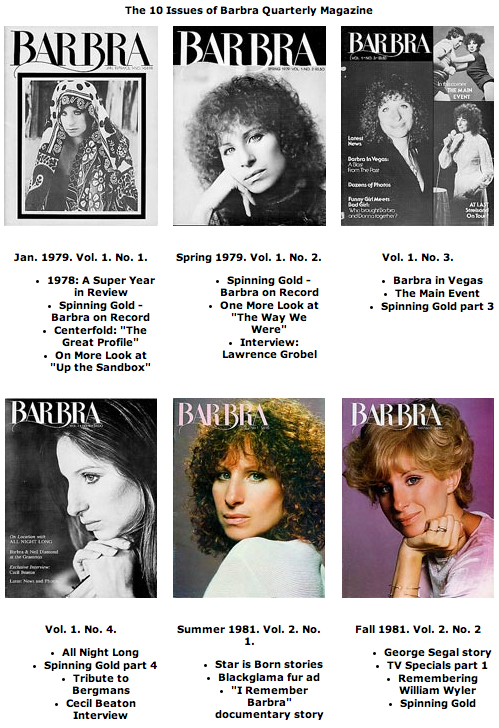
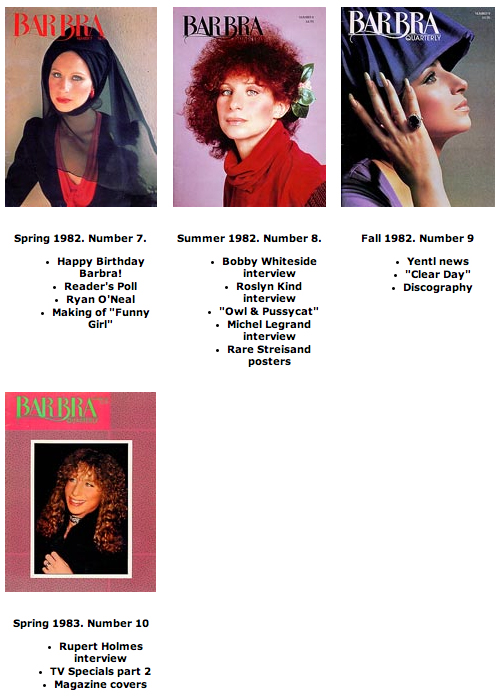
May 2014 Interview with James Spada
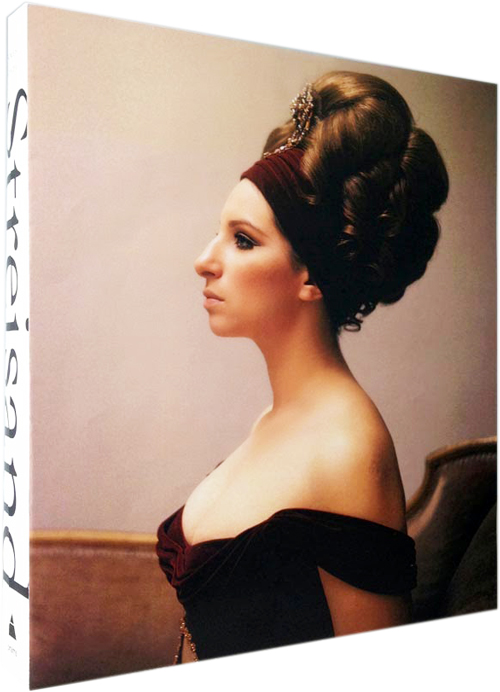 Abrams published a new Streisand book from author James Spada on October 21, 2014.
Abrams published a new Streisand book from author James Spada on October 21, 2014.
“Streisand: In the Camera Eye” is a collection of 170 of the most compelling photographs of Barbra Streisand, chosen for their rarity, beauty, and insight into Streisand’s multifaceted life and career. The pictures, most of which have never been published before, document her many phases, from her early days on Broadway, including “Funny Girl,” to her hugely popular TV specials, to her work as an actress in films such as “Hello, Dolly!,” “The Way We Were,” and “A Star Is Born.” Taken by some of the greatest names in photography—including Philippe Halsman, Francesco Scavullo, Douglas Kirkland, Bob Willoughby, and Cecil Beaton—the images also represent her fabled concerts, as well as personal moments away from the set and stage. Seven essays by Spada introduce the various periods of Streisand’s adult life, and, along with substantial anecdotal and quote-filled captions, they combine with the spectacular photos to tell the whole story of one of the world’s most popular and beloved stars.
Matt: After writing three books about Streisand, what made you return to the subject of Barbra Streisand again?
Spada: Four books on Barbra! I never could have imagined that back in 1974 when Barbra: The First Decade was published. But each of my books on Barbra has been different. With this one, I wanted it to be a sumptuous pictorial tribute to Streisand’s beauty and talent. I went to one of the best art book publishers in the world, Abrams, and they signed me up to do it! It will truly be the most lavishly produced of any of my books on Barbra.
Matt: The new book looks like a gorgeous “coffee table” photo book. But there’s text by you, too. Can you explain what you’ve done with Streisand: In the Camera Eye?
Spada: The book’s format is very simple and elegant. On most spreads there is a full page photo of Barbra on one page and on the other page an extended caption written by me that discusses what the photo shows and includes a quote from a costar, director, friend or observer praising Barbra and giving their explanation of why she is so special. There isn’t a negative word in the book about her.
Matt: Barbra rarely talks about it, but she has worked with many iconic photographers. And she is an amazing “model.” Does the new book comment on or illustrate that?
Spada: Absolutely. The book begins with four unpublished full color images by Craig Simpson taken when Barbra was eighteen. In one of them she looks like Audrey Hepburn or a Vogue model! There are four unpublished Cecil Beaton photos plus the cover shot, and he explains why she was the “perfect mannequin” to model the Clear Day outfits. The book illustrates all of her plays, television specials and movies, but also has many photos that are used just to illustrate her beauty.
Matt: Did you make it to any of the 2006 or 2012 Streisand concerts? Still consider yourself a fan of hers?
Spada: I did see her in 2006 but not 2012. Yes, of course I’m still a fan. Her photos, TV shows and movies have given me great pleasure since the mid-sixties and they still do to this day. It was such a joy to do this book. I had a lot of help from Jorge Rodriguez Garcia in Spain, who made his fantastic collection of Barbra photos available to me. We had this transcontinental working relationship!
Matt: What will surprise Streisand fans most about your new book?
Spada: I hope it will be the number of previously unpublished photos. I have a great one by Bob Willoughby of Barbra in the hotel pool in 1963, a few alternates from Howell Conant’s 1966 Look shoot, several unpublished shots by Mario Casilli, three amazing shots taken for the 1963 Look profile and never used, and lots more! And also, many of the previously published photos were used very small or poorly reproduced when they were first published, but in this book they’re full page and beautiful! I put this book together with Barbra’s fans in mind, and I’m confident they will be very pleased.
End.
[ top of page ]
